 Print showing Union Station in 1906, a year before it officially opened
Print showing Union Station in 1906, a year before it officially opened
Sept. 29, 2013 marks the 25th anniversary of the reopening of Union Station.
Originally opened in 1907, the station was at the time the largest room in the world under one roof, and possibly the grandest. Outfitted with mahogany, crystal, glass and marble, the station also housed a bakery, butcher, restaurant, nursery, hotel, YMCA, mortuary, bowling alley, ice house, liquor store, Turkish baths, police station, and silver-monogramming shop. Presidents, kings and queens used rooms within it.
But then came the automobile, and train travel screeched to a halt. With few people using the station for its intended purpose, the railroads that owned the station agreed in 1968 to lease it to the Department of the Interior, which turned Union Station into the National Visitors Center.
It was to be one of the governments' most high-profile boondoggles of the decade. "It's a national disgrace," one Interior official said afterward.
The primary feature of the National Visitors Center was the PAVE, or "Primary Audio Visual Experience," a musical slideshow that displayed photos of D.C. attractions. It was located in a sunken area cut into what was the main waiting room, and was thus given the nickname "The Pit." There was also a "national book store," a Hall of Flags, and, of course, souvenir booths.
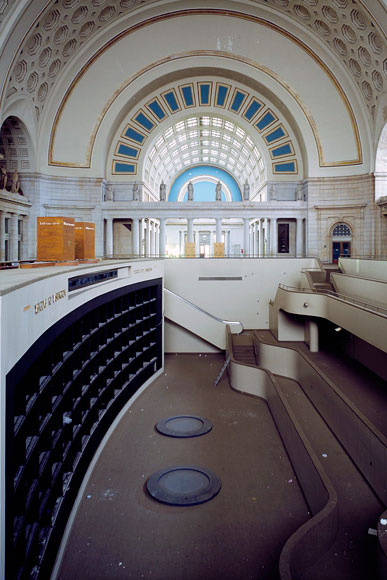 The "PAVE"--"Primary Audio-Visual Experience" when Union Station was used as a visitors' center, AKA "The Pit"
The "PAVE"--"Primary Audio-Visual Experience" when Union Station was used as a visitors' center, AKA "The Pit"
The $100 million redevelopment of Union Station into the visitors' center was rushed through, with construction starting in May 1974 and with President Nixon ordering the center to be finished by July 4, 1976, for the nation's bicentennial. According to a
Time article in 1982, "planners neglected heating, wiring and plumbing. Work began before the cost estimates and architectural plans were finished. A construction contract was signed that invited cost overruns. The crumbling roof was ignored." When July 4 rolled around, the center was technically open, but missing a glass roof. The
New York Times reported that visitors "dined al fresco, entertained and frequently soiled by swooping pigeons."
Even after the opening, "The Pit" was mostly ignored by tourists. "What is the point of looking at slides of the U.S. Capitol when you can walk out the front door and see it?" asked one senator. It closed two years later.
Meanwhile, train travel was rebounding, yet train travelers had to lug their suitcases to a "replacement station" less than one-tenth the size of the original.
New York Times critics called it reminiscent of "a hospital emergency room entry" and "Hitler's bunker."
With no trains running through Union Station and no visitors center, it fell into decay. The roof caved in, pipes burst, and mushrooms grew from the floors. Puddles up to five inches deep formed.
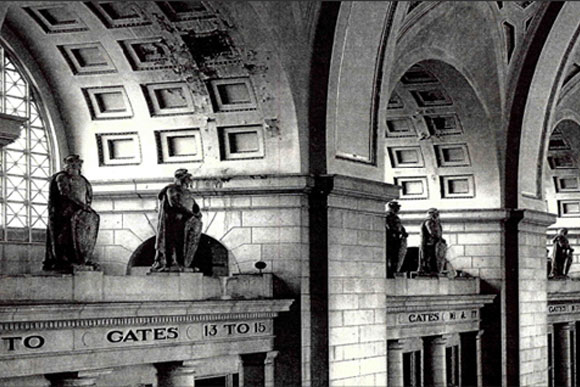 The station had fallen into disrepair
The station had fallen into disrepair In the 1980s, interest in turning Union Station back into a train station began picking up steam. After congressional hearings, meetings and proposals, after years of negotiations and construction, Union Station finally reopened in 1988.
We collected archival photographs to show you one story of Union Station's peak, decline, and revitalization. We hope you'll share your favorite images or memories from Union Station or the Visitors Center and "the Pit" either in the comments or by emailing
[email protected].
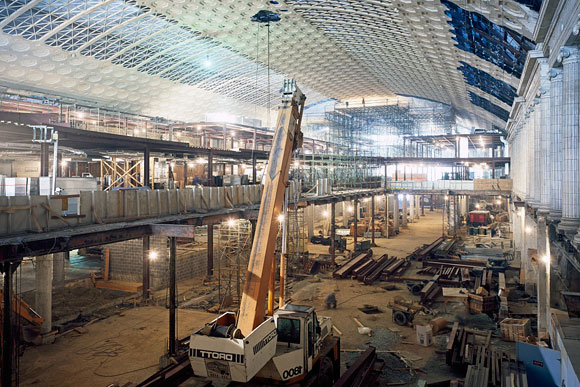
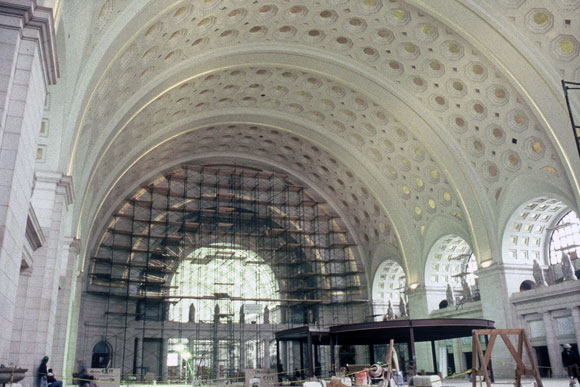
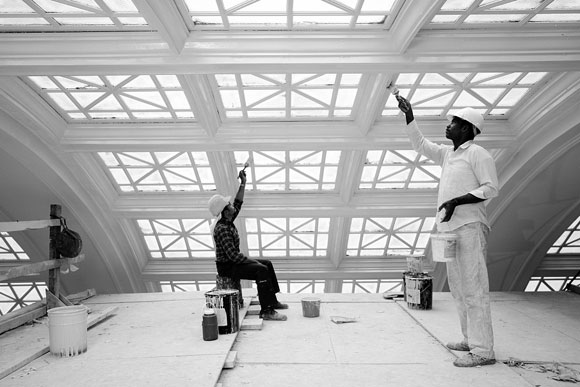
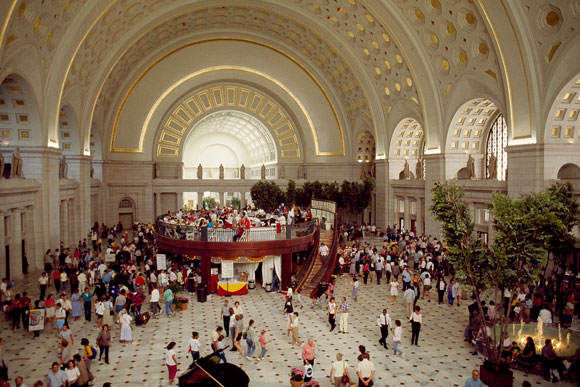 Opening day at Union Station, Sept. 29, 1988
Opening day at Union Station, Sept. 29, 1988
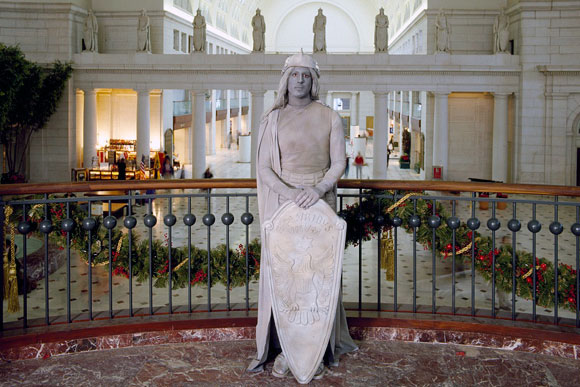 An actor dressed as a Union Station statue poses in Union Station, one day before the station reopened to the public in 1988
Prints from Library of Congress Prints and Photographs Division; most photographs from the Carol M. Highsmith Archive, Library of Congress, Prints and Photographs Division. Disrepair photo and scaffolding photo courtesy Union Station Redevelopment Corporation.
An actor dressed as a Union Station statue poses in Union Station, one day before the station reopened to the public in 1988
Prints from Library of Congress Prints and Photographs Division; most photographs from the Carol M. Highsmith Archive, Library of Congress, Prints and Photographs Division. Disrepair photo and scaffolding photo courtesy Union Station Redevelopment Corporation.